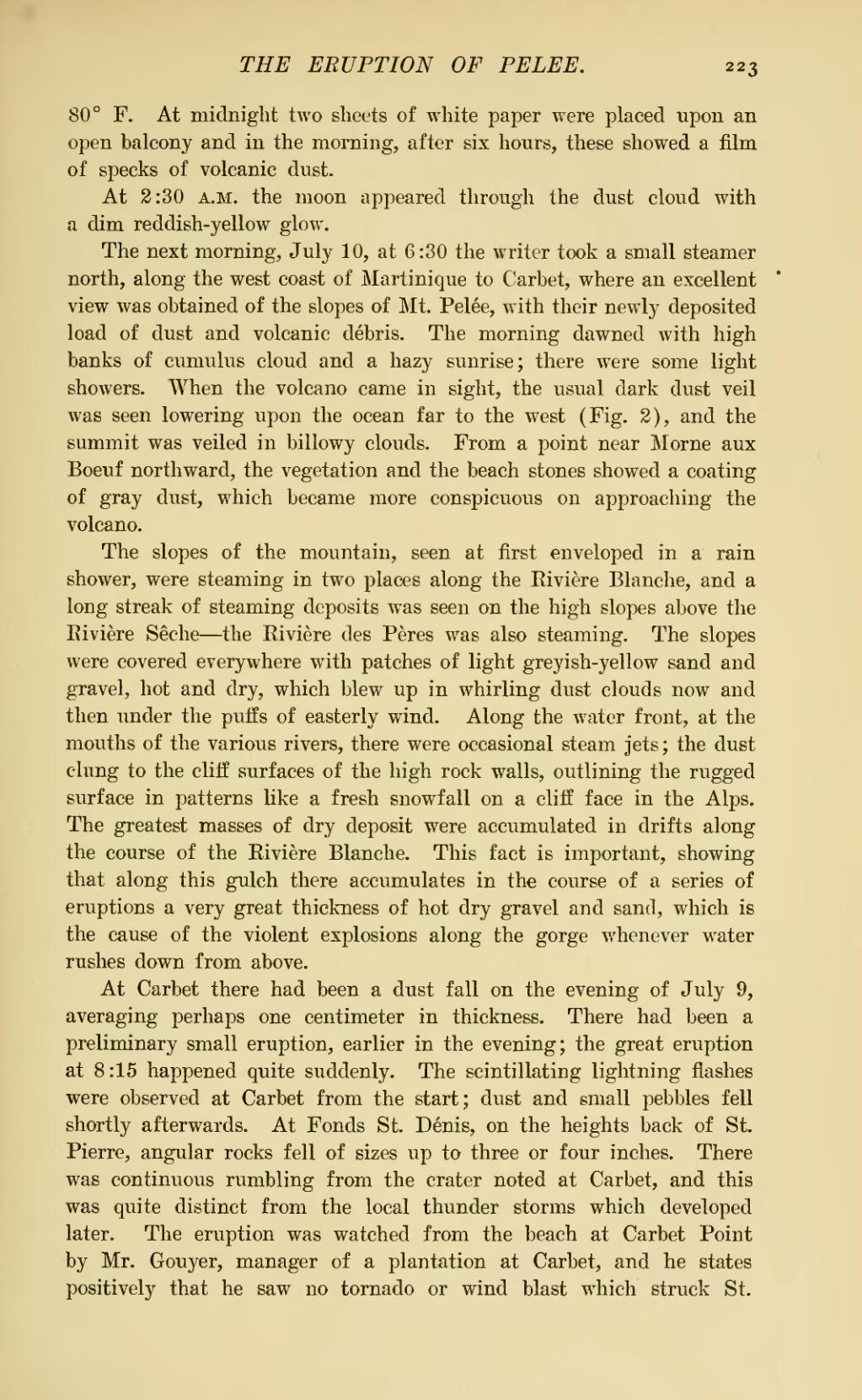80° F. At midnight two sheets of white paper were placed upon an open balcony and in the morning, after six hours, these showed a film of specks of volcanic dust.
At 3:30 a.m. the moon appeared through the dust cloud with a dim reddish-yellow glow.
The next morning, July 10, at 6:30 the writer took a small steamer north, along the west coast of Martinique to Carbet, where an excellent view was obtained of the slopes of Mt. Pelée, with their newly deposited load of dust and volcanic debris. The morning dawned with high banks of cumulus cloud and a hazy sunrise; there were some light showers. When the volcano came in sight, the usual dark dust veil was seen lowering upon the ocean far to the west (Fig. 2), and the summit was veiled in billowy clouds. From a point near Morne aux Boeuf northward, the vegetation and the beach stones showed a coating of gray dust, which became more conspicuous on approaching the volcano.
The slopes of the mountain, seen at first enveloped in a rain shower, were steaming in two places along the Rivière Blanche, and a long streak of steaming deposits was seen on the high slopes above the Riviere Sêche—the Riviere des Pères was also steaming. The slopes were covered everywhere with patches of light greyish-yellow sand and gravel, hot and dry, which blew up in whirling dust clouds now and then under the puffs of easterly wind. Along the water front, at the mouths of the various rivers, there were occasional steam jets; the dust clung to the cliff surfaces of the high rock walls, outlining the rugged surface in patterns like a fresh snowfall on a cliff face in the Alps. The greatest masses of dry deposit were accumulated in drifts along the course of the Rivière Blanche. This fact is important, showing that along this gulch there accumulates in the course of a series of eruptions a very great thickness of hot dry gravel and sand, which is the cause of the violent explosions along the gorge whenever water rushes down from above.
At Carbet there had been a dust fall on the evening of July 9, averaging perhaps one centimeter in thickness. There had been a preliminary small eruption, earlier in the evening; the great eruption at 8:15 happened quite suddenly. The scintillating lightning flashes were observed at Carbet from the start; dust and small pebbles fell shortly afterwards. At Fonds St. Dénis, on the heights back of St. Pierre, angular rocks fell of sizes up to three or four inches. There was continuous rumbling from the crater noted at Carbet, and this was quite distinct from the local thunder storms which developed later. The eruption was watched from the beach at Carbet Point by Mr. Gouyer, manager of a plantation at Carbet, and he states positively that he saw no tornado or wind blast which struck St.

